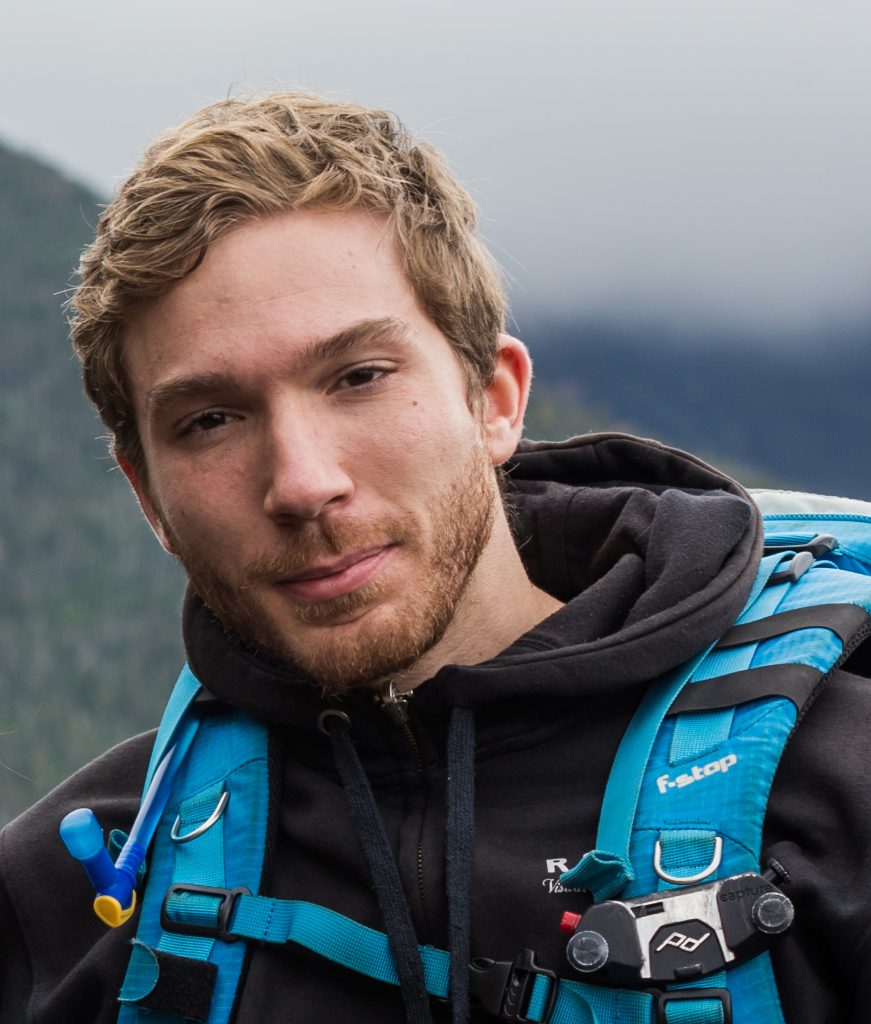Planning a trip to Nepal? This guide is the perfect starting point. I'll try to answer all the questions you might have about this bewitching destination. What to do, what to see, how to get around, visas, safety, health... I try to cover as much practical information as possible to make your trip to Nepal unforgettable.

If you have any questions, don't hesitate to post in the comments or contact me. contact us by e-mail or on the networks.
There are 1001 reasons to visit Nepal. Mountains, jungle, pilgrimage sites, spirituality, extreme sports... there's something for everyone!
The scenery in Nepal is varied and almost always breathtaking. On one side, the imposing Himalayan mountains offer some of the finest trekking and mountaineering routes on the planet. On the other, the lush plains are ideal for observing Asian wildlife.
Lovers of the outdoors and adrenalin, or those wishing to step out of their comfort zone, can also satisfy these needs with the many activities available around Pokhara: mountain biking, paragliding, rafting...
But what impressed me most about Nepal was the change of scenery I felt. Spirituality and religion are all around us there, and that adds a little something extraordinary. Whether it's the simple "namaste" to say hello to a Nepalese or the "expedition puja", a compulsory part of mountaineering expeditions. Or the many temples dotted around the streets of Kathmandu. Spirituality is everywhere in Nepal.
Are you ready for all these unique experiences? To help you prepare for your trip and share my experience there, I've put together the most comprehensive travel guide to Nepal possible. It covers all the essential information on visas, safety, what to see, know and do, as well as how to get around, my recommendations for trip planning, and much more.
If you have any questions, please don't hesitate to contact me!
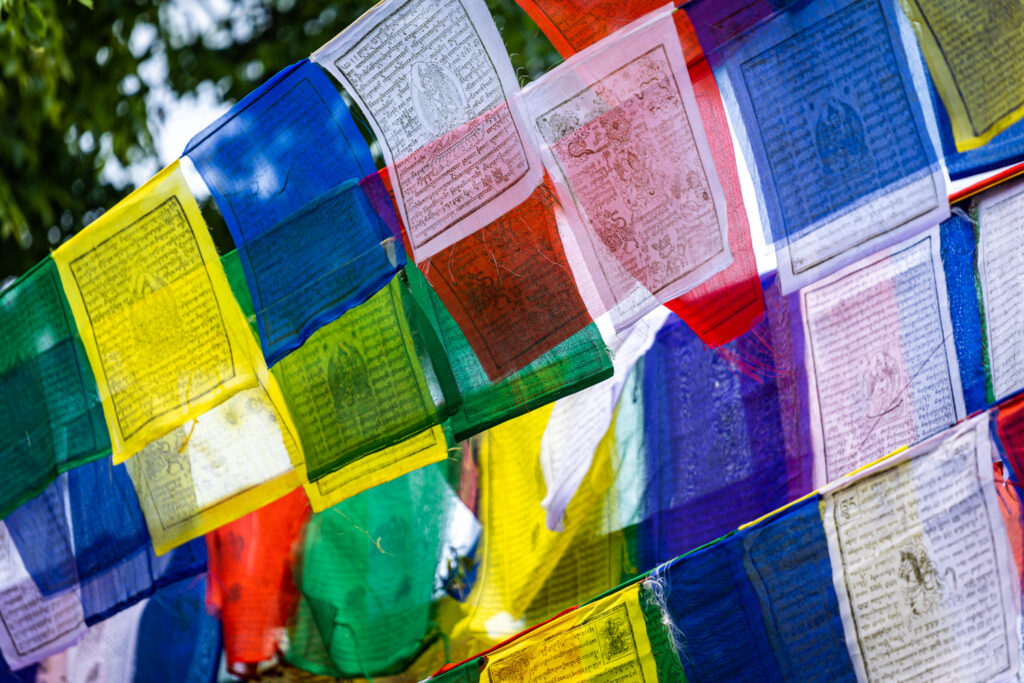
Complete guide to Nepal
What you need to know before traveling to Nepal.
Nepal: presentation
Nepal is a small country in southern Asia, and one of the poorest in the world. Its direct neighbors are China (Tibet) to the north and India to the south, east and west.
Nepal is world-famous for being home to the world's highest mountain range, the Himalayas, and the world's highest peak, Everest (8849 m). The country is also home to vast plains where animals such as the Asian elephant can be observed.
Nepal has a population of 26 million, with a high concentration in the capital, Kathmandu.
The main language is Nepali, which has a different alphabet to our own. English is still widely used for tourism, and it's possible to get by in English only in most tourist areas. It is also possible to find French-speaking Nepalese, like our French-speaking agency, but this is much rarer.
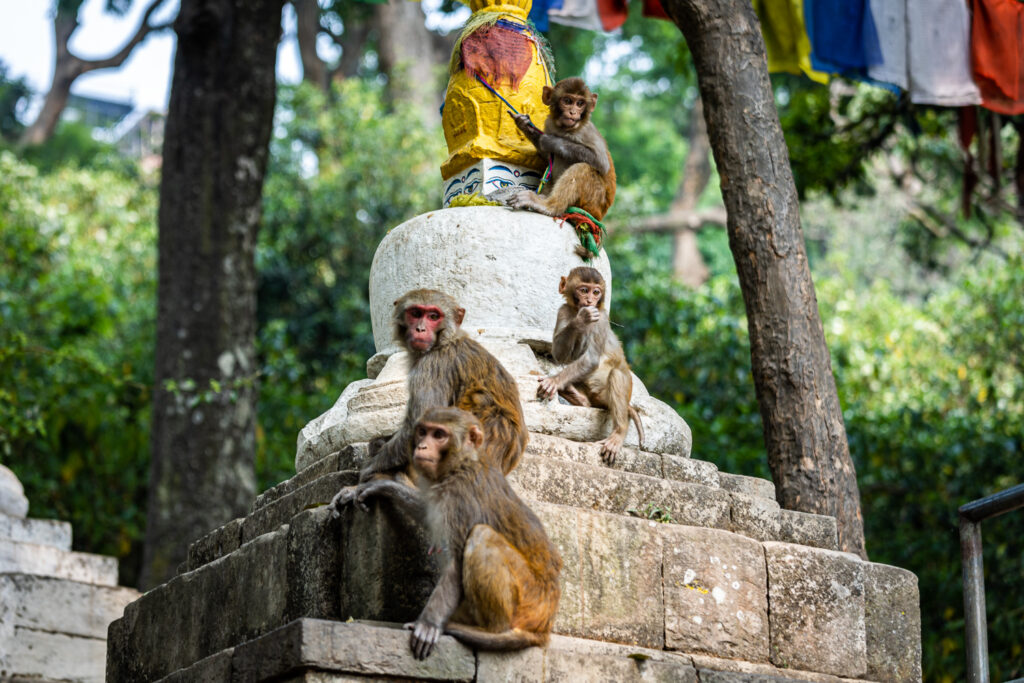
When is the best time to travel to Nepal?
There are several answers to this question, depending on the activity you're aiming for.
Nepal has four seasons, which are dictated by the monsoonor rainy season, in summer.
The best time to visit is in autumn, after the monsoon season, during the months of October and November. The skies are often very clear and the weather rather dry. This makes for magnificent panoramas. Unfortunately, this is also the season with the most tourists.
The second best period is spring, from late February to mid-May. The weather is quite warm during the day and the days are quite long, making it perfect for trekking. We did our Annapurna trek in March/April, and had very good weather.
The only worry is that during April, the Nepalese build a lot of fires to prepare the ground for future harvests, and this sometimes causes a serious lack of visibility, especially near the towns.
The weather is generally equally fine between November and February, but it's winter in Nepal and temperatures can be very cold. If you choose this period, be prepared for sub-zero temperatures all day long.
If your goal is to make mountaineeringDepending on the peaks you're aiming for, the best period can vary. But overall, autumn and spring are the best periods.
Visas for Nepal.
You will probably need a visa to travel to Nepal. Check the restrictions on your government's website.
Tourist visas are available on arrival at Kathmandu airport and when you pass through a border post.
Online visa application
You can also apply for your visa online. If you choose this option, the application must be made 15 days before your arrival, and your visa must be collected within 6 months of your application.
You'll need to have a passport-size photo with you, a passport valid for the next 6 months and the receipt for your online visa application.
The price of the visa depends on the length of time you plan to stay in Nepal:
- 15 days - USD 30
- 30 days - USD 50
- 90 days - USD 130
Visa application at the airport
To apply for a visa at Kathmandu airport, follow the steps below:
- Filling out the Arrival Card at immigration
- Fill in the Tourist Visa form on automated terminals. This can be done before you arrive in Nepal on the Nepal Immigration Department website. If you do this, you'll need to carry the bar-coded application receipt with you, as you'll need it to collect your visa. Please note that this application expires after 15 days. You must therefore arrive in Nepal no later than 15 days after making this request.
- Then head to the counters to make your payment.
- Collect your receipt, you won't get your visa without it.
- Finally, pass through passport control. Show your passport, payment receipt and receipt for the Tourist Visa form. They will normally take a photo and fingerprints, and then your visa will be added to your passport.
- You can officially return to Nepal!
Payment for the visa at the airport can in theory be made by Visa or Mastercard, but this doesn't always work (it didn't for us), so bring enough cash for that. They are quite flexible and can accept different currencies. We didn't have enough US dollars, so we paid for one of the visas with a mixture of US dollars, Euros and Canadian dollars...
Electricity in Nepal.
Nepal has a relatively good electricity network. In the cities, you won't have too many problems. There are occasional power cuts lasting ten minutes or so, but nothing too serious. Most hotels and restaurants have generators to avoid blackouts. On the other hand, the further you travel from the cities, the more uncertain your access to electricity will be.
For example, lodges high up in the mountains generally have no access to electricity at all. Or sometimes, they do have electricity, but it's reserved for the running of the building and you won't have access to it.
I recommend carrying a headlamp or torch in your bag in case of heavy cuts. It comes in very handy.
I also recommend that you have an external battery. This will enable you to recharge your devices in situations where you don't have access to electricity. There are lots of them available. I recommend this one-here. For more information, a detailed article with several battery choices is in preparation.
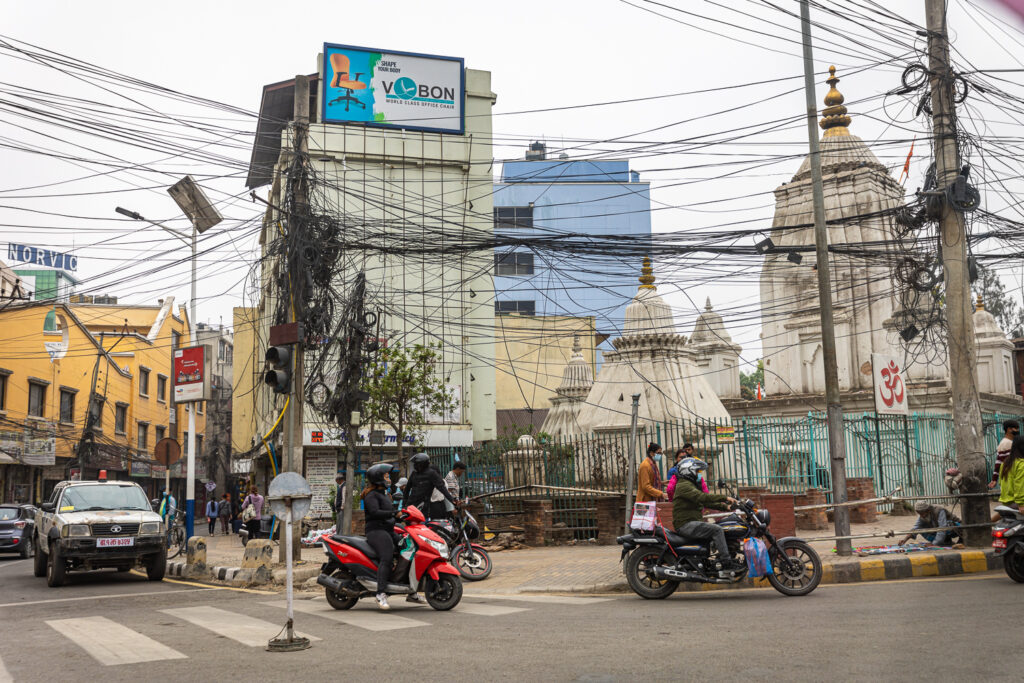
Internet and telephone network in Nepal
The Internet is fairly widespread in Nepal. You'll find wifi in most restaurants and hotels. Don't expect super-fast speeds, but it's good enough.
On treks and expeditions, this is going to be much more random. On the Annapurna tour, we had wifi on about 70 % of the trek, but it was sometimes chargeable. I know it's possible to get wifi at Everest base camp for a fee too. But on some of the more remote treks, you won't get any connection at all.
You can use a Sim card or an E-Sim in Nepal, but once again, the network (in 3G) is sometimes very unpredictable. The network isn't necessarily everywhere, and the terrain makes connectivity sometimes complex.
Getting around Nepal
My first piece of advice is to avoid moving around too much in Nepal. Getting around is often a bit complicated.
There are buses that can take you almost anywhere. But they're not very comfortable, there's a lot of traffic jams as soon as you get close to the big cities, and journeys are often long. Don't be fooled by the number of kilometers displayed. Sometimes 100 km can take 4 hours. It's also not uncommon for the road to be blocked by another broken-down bus, which can further delay your journey.
Air travel is also well developed, with several airports offering internal flights (to Jomson, Pokhara and Lukla). There are several airlines, such as Buddha Air, Yeti Air and Simirik Air... But Nepal's airlines are not the only ones. don't have a good reputation and accidents are relatively frequent. If you're going to Everest or the surrounding area, you'll have no choice but to take a flight to Lukla - it's the only way to get there. But if not, I recommend you take the bus or other means of transport when you can.
I don't recommend renting a car in Nepal - it's possible, but in my opinion the country doesn't lend itself to roadtrips. Instead, use public transport or hire a driver.

Safety in Nepal.
Nepal is a pretty safe country. The people are very welcoming and generous. They are well aware that tourism is an important part of the country's economy, and they take good care of foreign visitors most of the time.
However, Nepal remains a country where basic safety practices must be maintained. Don't leave your personal belongings unattended, and avoid walking alone late at night...
Most problems occur during treks. Their difficulty can be underestimated. Don't set off without knowing what equipment you'll need - even if it's hot during the day, it can quickly get close to or below 0 degrees Celsius at night. Don't go trekking alone: remember to tell people where you're going and for how long. If you're a woman, it's best not to trek alone with a male guide.
Take basic precautions, but apart from that you should feel very warmly welcomed by the Nepalese and safe in most places.
Is the water safe to drink in Nepal?
As in many countries, water is not potable in Nepal. However, you'll find water almost everywhere, even in the lodges. You can use this water for washing yourself, brushing your teeth or doing your laundry, but I wouldn't recommend drinking it, even if the locals do.
I recommend you carry a reusable bottle, if possible with a filter like the lifestraws, and water purification pills. We did our whole trip with pills and we were fine the whole trip, except for two days during the trek, but we don't know if the worry came from the water or the food or whatever.
As water is not drinkable, avoid any food that may have come into contact with water. Typically, green salad is often avoided, as it is washed with water. Ice cubes are also often at risk.
I know it's sometimes difficult, if not impossible, especially on expeditions, but try as hard as you can not to buy plastic water bottles. Waste management in Nepal is complicated and plastic pollution is very visible.

Vaccines and diseases in Nepal
Nepal is one of the poorest countries in the world, so you'll need to take a few extra precautions, as the level of hygiene is not at the same level as in Western countries. Remember to carry disinfectant with you.
One of the illnesses likely to strike you if you're trekking or mountaineering is altitude sickness. This is an illness not to be taken lightly. It can start as soon as you reach 3000m to 4000m altitude. Symptoms include headaches, fatigue, nausea and loss of appetite. In the most severe forms, it can lead to cerebral or pulmonary edema and death. To prevent it, we advise you to climb slowly to higher altitudes (avoid more than 600m of ascent between two days of walking) and to stay well hydrated (water or tea). Don't hesitate to talk to your guide if you feel any symptoms.
A detailed article on altitude sickness will be coming soon.
As far as vaccines are concerned, I didn't need to take any specific ones. However, depending on where you travel, some may be necessary. Especially if you spend time in jungle areas. For more information on vaccines, I recommend you consult the traveler's clinic.
Nepal Travel Insurance
You should always have travel insurance. We experienced this first hand when our Galapagos trip at the time of COVID. Without it, we would have lost some of our feathers.
Check with your credit card or employer to see if you're covered. And if not, consider taking out insurance just for this trip. Health care or repatriation can be expensive.
In Nepal, travel insurance is even more important if you're planning a long trek or mountaineering trip, as some operators will require proof of insurance to provide you with their services. In these activities, you are likely to be in more or less isolated areas. This makes access to treatment or evacuation to a health center complex and very expensive, if the only way to get you out is by helicopter, for example.
For trekking, this may be okay, but for mountaineering or climbing (and other sports considered extreme, paragliding, rafting...), 99 % insurance policies won't cover you for these activities. You'll need specific insurance to cover this. I personally use TugoThey cover all extreme sports and are one of the few companies to still cover mountaineering. I also use it for diving.
If you have any doubts, you should know that in Pakistan, for example, if you are mountaineering and have an accident requiring helicopter evacuation, the helicopter will only move if you are able to advance the money. This also happens in Nepal.
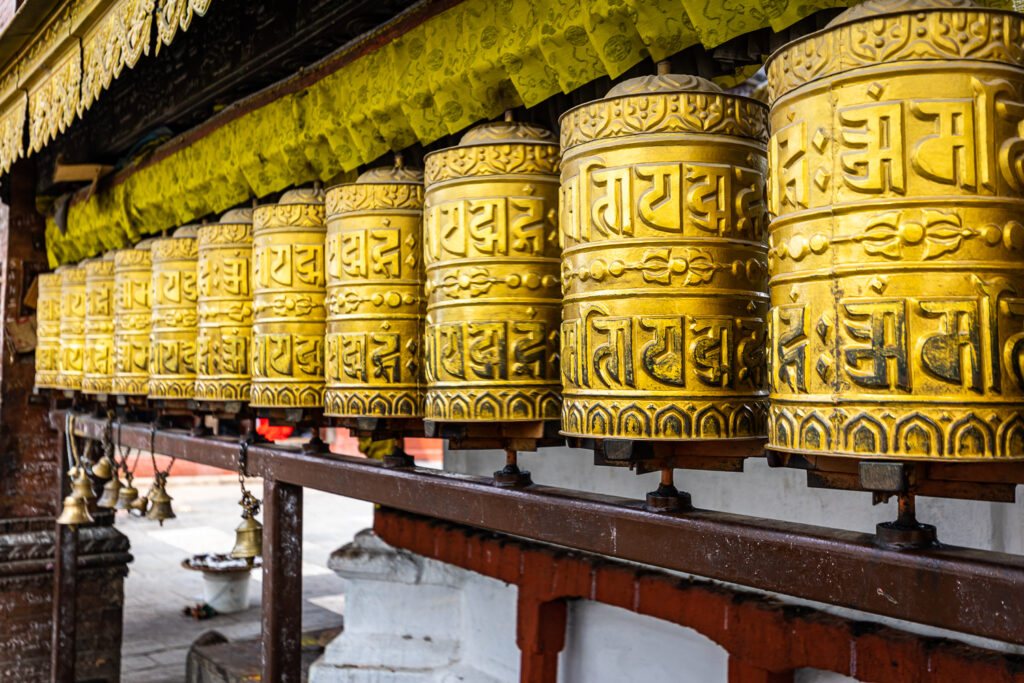
Talking of money, what is the currency in Nepal?
The official currency in Nepal is the Nepalese Rupee. 1 Canadian dollar is approximately 100 Nepalese rupees, 1 euro is approximately 145 Nepalese rupees.
A number of tourist attractions also accept US dollars (1 US dollar is equivalent to around 130 Nepalese rupees).
In the city, you should find ATMs just about everywhere, but outside the cities, ATMs are sometimes hard to find. Almost all ATMs have maximum withdrawal limits, usually 10,000 rupees, and you'll have to pay a bank fee. From what we've seen, fees are fixed per withdrawal. It's best to withdraw the maximum allowed each time to avoid fees.
Credit cards are not always accepted everywhere, but most tourist places, hotels, etc., do accept them. The rule that the further you are from a city, the less credit cards are accepted is quite true in Nepal.
I recommend that you always carry cash, ideally 3/4 rupees and 1/4 US dollar.
If you have surplus cash to exchange, you can do so in major cities or at the airport.
How much does it cost to travel to Nepal?
Nepal is one of the poorest countries in the world. So it's pretty cheap to travel there. More often than not, the plane ticket to Kathmandu will be your biggest expense. However, I'm not talking about mountaineering expeditions or treks, which can quickly become very expensive. It all depends on the level of comfort you're looking for and the duration of your adventure.
To give you an idea, our trip to tour the Annapurnas cost us 5,200 Canadian dollars, including 2,100 Canadian dollars for airfare, per person for 28 days. And we did a trip where we enjoyed ourselves and didn't look too closely at expenses. We did a number of big, expensive tourist activities, such as paragliding, rafting and the flight to see Mount Everest. A detailed article on our expenses will be coming soon.
The prices shown here are just to give you an idea, as the variation from one place to another can be as much as fivefold. You should also bear in mind that on treks, if your meals are not included in your package, the further away you are, the rarer and more expensive certain things will be.
Food in Nepal
- Fast food/Lunch: 180-300 Rupees
- Starter, main course and dessert: 1000 to 2000 rupees
- Bottled water: 20-50 Rupees
Accommodation in Nepal
- Lodge: 500-2500 Rupees
- Double room in a 3-star hotel: 2,000 - 10,000 rupees
- Luxury hotel: 15,000 - 25,000 rupees
Transport in Nepal
- Cab: 60 rupees + 50 rupees/km
- Tourist bus: 800 - 2000 rupees (Kathmandu - Pokhara)
- Plane: 30,000 Rupees (Kathmandu - Pokhara)
Activities
- Trek: 1200 CAD to 4500 CAD (depending on trek duration)
- Paragliding (Pokhara): CAD 190
- Rafting: 150 CAD
- Everest panoramic flight: CAD 200
- Mountaineering: CAD 5,000 to CAD 100,000 (depending on peaks and length of expedition)
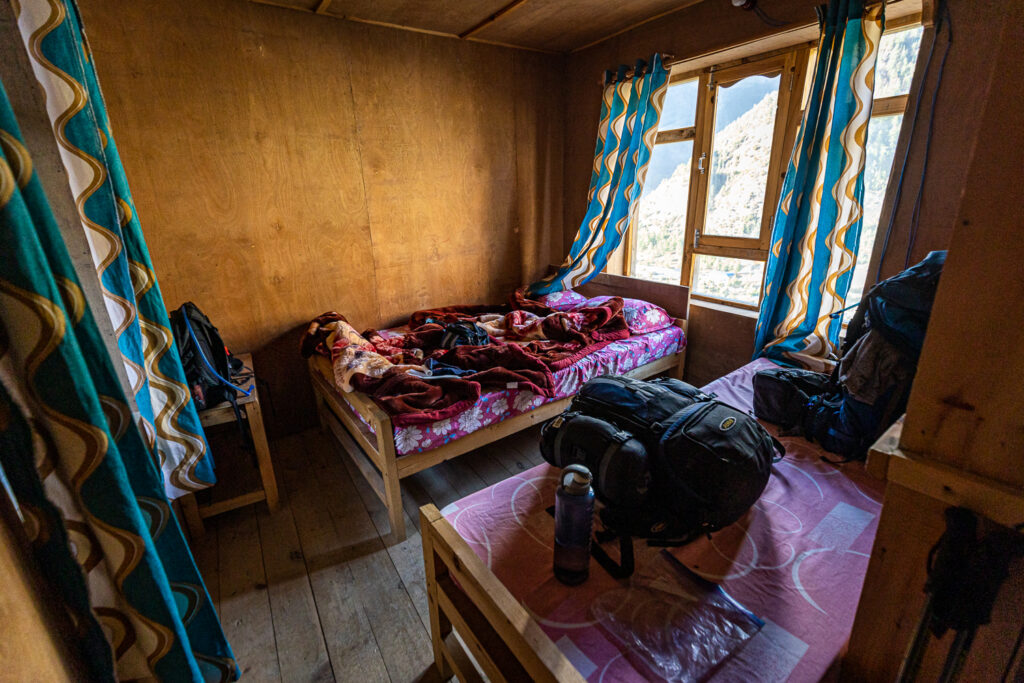
What do you eat in Nepal?
One of the things that struck me about Nepal was how well we ate! I had really expected to eat the same thing every day and avoid Western dishes, which are often not great in countries where the dish is not part of their culture.
I was very pleasantly surprised. In the end, the dishes were very varied, and even Western dishes like pizza and burgers had nothing to envy Canada or France.
Nepalese gastronomy is strongly influenced by Chinese cuisine in the north and Indian cuisine in the south. As a result, you'll find many specialties from these two countries. The country also has several specialties, the best known being momos, a kind of Japanese dumpling/ravioli that's really very good, and Dhal bat (lentil rice), a mixture of rice and lentil soup often accompanied by a curry and vegetables.
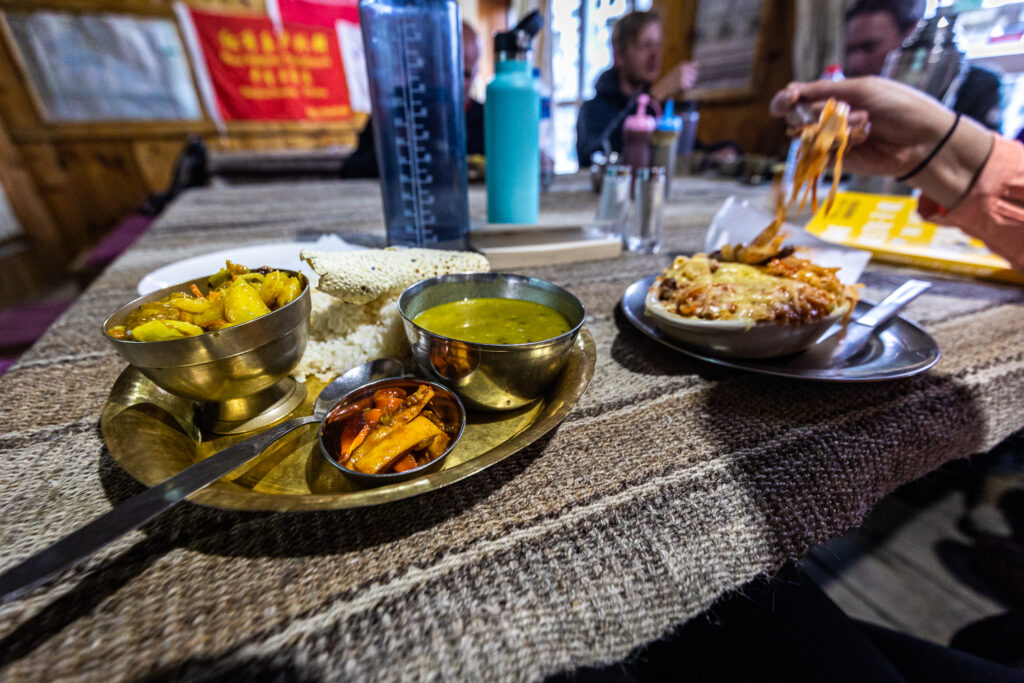
Tips and tricks for ethical travel in Nepal.
Nepal is a destination of choice for trekkers and mountaineers the world over. And as in many countries, the large number of tourists can have a negative impact on the country. To preserve these magnificent spaces, everyone has to do their bit, and that includes you if you want to visit this country.
One of the main impacts, and you'll quickly see it if you're trekking, is pollution linked to the consumption of plastic and waste in general. To help with this, here are a few tips:
Avoid plastic water bottles.
Sometimes it's impossible to go without, like when eating out. But as often as possible, try not to buy a plastic bottle. Use your own reusable water bottle. Fill it as soon as possible with water that you've filtered with tablets or boiled before drinking.
Avoid burning wood for heating or cooking.
Deforestation is a major problem in Nepal. When you arrive in some villages, you'll be confronted with vast, treeless wastelands. Wood is used for building, heating and cooking. Whenever possible, showers are heated by solar panels. And for meals, try to order at the same time as the other members of your group and your guide. This way, the kitchen only needs to be lit once, rather than several times during the evening. For heating, use several layers of clothing or blankets to avoid using too much firewood.
Take your garbage with you.
Waste management in Nepal is complex. Imagine the logistics of managing waste in a village at 3500m altitude, accessible only on foot. You'll probably discover some open-air garbage garbage cans on your way in or out of certain villages. To avoid this, try as much as possible to transport your own waste to the next big town where there is real waste management.
Stay on the trails.
This is a classic for trekking or hiking. Most of the time, you'll have a very clear path to follow. Although it may be tempting to go off the trail to get a better view or whatever, try to stay on the path so as not to damage the habitats you're passing through.
Use the toilet when available.
There will rarely be one between two stages of a trek, but it will be easy to find one in every village. Make the most of these toilets. Even in the middle of nowhere, relieving oneself in the wild is not without consequences. Most villages are close to a river, and have no water purification system. Polluting waterways can be very harmful to villages.
Respect the local people and their customs
It is important to respect the premises. Ask permission before taking photos. Dress and behave respectfully, and listen to your guide, if you have one. Hindu and Buddhist cultures can be very different from our own. Listen and try to understand before you judge.
In the same vein, Nepal depends on tourism, and it's important to respect the people who accompany you and ensure your safety. Your guide or porters are very important to a successful experience in Nepal. Make sure, as far as possible, that they are properly paid and not exploited. Don't take bags that are too heavy; porters have rules about the maximum weight they can carry, but often they won't dare say no to you. Try to travel light.

What is there to see and do in Nepal?
When we think of Nepal, we inevitably think of the Himalayas. But that's not the only thing Nepal has to offer.
What to do in the Kathmandu Valley
The city of Kathmandu lies in a valley that brings together several towns and villages: the Kathmandu Valley. Kathmandu is a veritable anthill, and the first word that comes to mind to describe it is often chaos, but organized chaos.
The city is packed with historic and spiritual sites, many of which are UNESCO World Heritage Sites. So there's plenty to see and do, but it can quickly become redundant. The royal palaces and temples are all very similar, but you have to see at least some of them.
To help you find your way around, here is a selection of what I recommend you do when visiting the Kathmandu Valley.
Durbar square in Kathmandu, Patan or Bhaktapur
Durbar square or Place du Darbâr, the royal audience hall, is a square containing numerous temples and royal palaces. There are three in the Kathmandu Valley, one each in Kathmandu, Patan and Bhaktapur. Why three? To understand, we need to delve into the region's history. In the past, Nepal was divided into several kingdoms, three of which were located in the Kathmandu Valley: Basantapur (Kathmandu), Bhaktapur and Patan. To find out more about the history of Nepal and Kathmandu, go to here.
The tour can be done on your own, but having a guide (and you'll get many requests) will enable you to see details you wouldn't have noticed without them. Don't forget to take a look at the wood carvings, which are truly impressive.
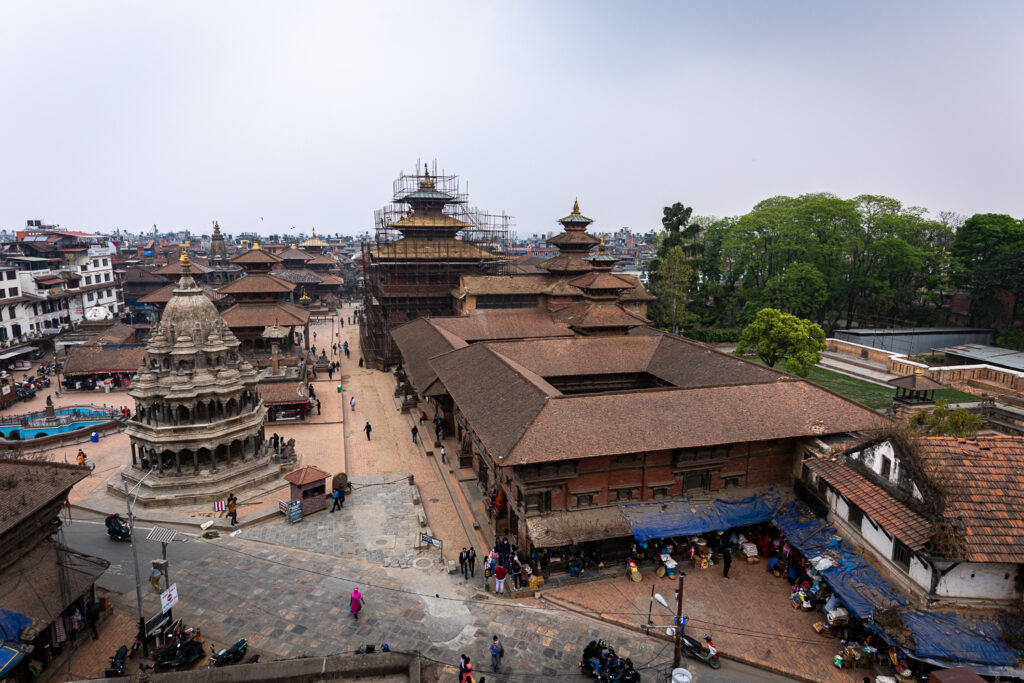
The stupa of Boudhanath or Bodnath
The Boudhanath stupa, also known as Bodnath, is one of Nepal's most important Buddhist shrines. It is located in the Tibetan quarter of Kathmandu. The stupa is strikingly large, and can be seen from afar.
You'll see many pilgrims and tourists walking around it, and even though the stupa is beautiful from below, I recommend you eat or have a coffee in one of the cafés or restaurants around the Stupa, whose terraces offer a view of the Stupa from above.
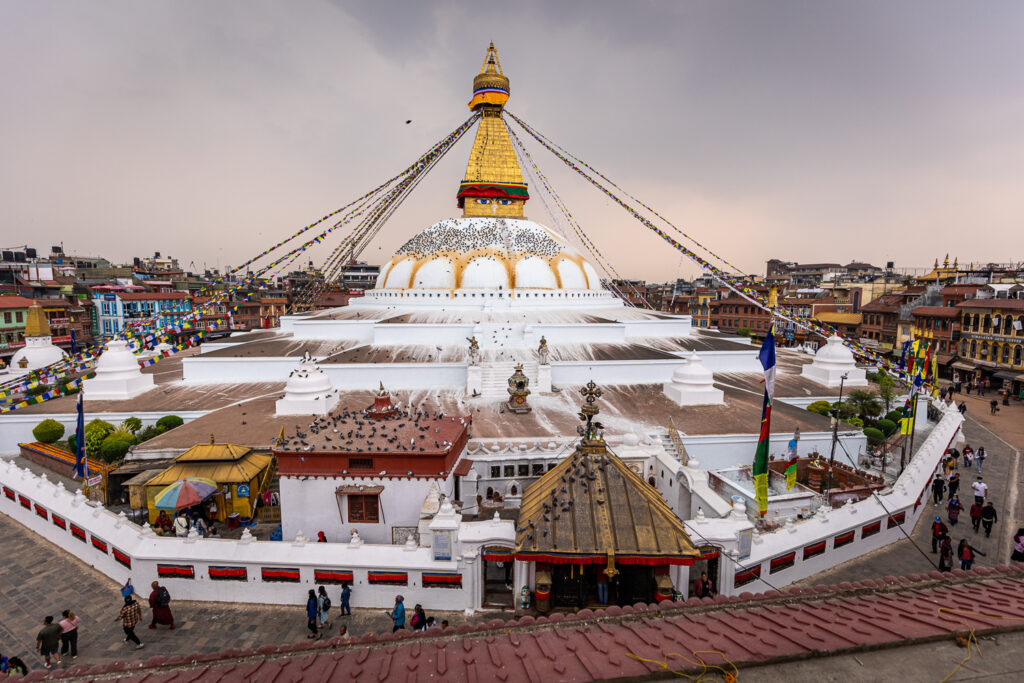
Pashupatinath temple
The Pashupatinath temple is one of the most sacred places in Hinduism. The site is visited by a huge number of pilgrims, and is often very crowded.
The temple is dedicated to Pashupati, Shiva's incarnation as "master of animals". You won't be able to visit the temple itself, unless you're Hindu yourself. But even if you're not Hindu, the place is well worth a visit, allowing you to observe the temple as well as the cremation rituals performed there daily.
Be careful, this may take you out of your comfort zone, as you'll see deceased people being prepared and then burned in front of you. Be respectful too, as this may be an interesting experience for you to observe, but it's still a family bidding a loved one a final farewell, so keep your distance.
If you want to pose with them, they'll probably ask you for a few coins.
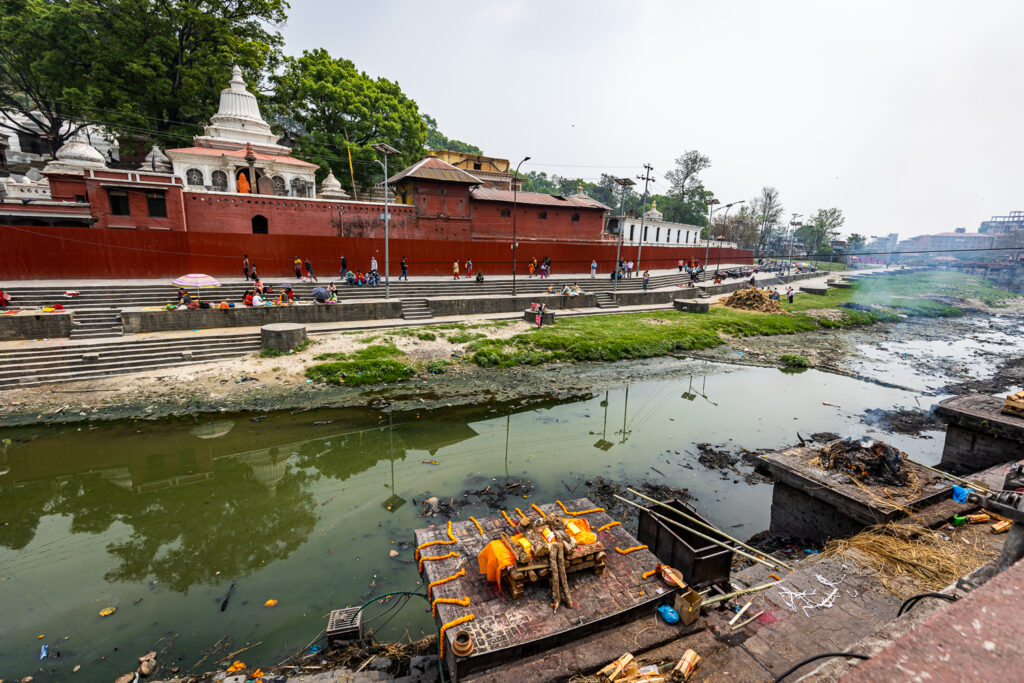
Swayambhunath temple
The temple of Swayambhunath, also known as the Temple of Signs, is the last place in Kathmandu that's impossible to miss.
To access the temple and its Stupa, you'll have to start by climbing a grand staircase, 365 steps long. Along the way, you'll discover why it's nicknamed the "Temple of Signs". There are many of them circling the staircase. Be careful with your belongings and especially your food - they're very good at getting a few cookies out of you if you're not careful.
At the top of the staircase, you'll see a beautiful stupa and a fine view of the city of Kathmandu, well worth the detour.
This temple is a sacred place for both Hindus and Buddhists, which is rather unusual for me, but very interesting to discover.

The best things to do outside the Kathmandu Valley.
There's much more to Nepal than just Kathmandu: there are many other regions well worth a visit.
Visit Pokhara
Pokhara is the largest city in the Annapurna region. It's an ideal place to find some peace and quiet, especially compared to Kathmandu. The town lies on the shores of the magnificent Lake Phewa, where you can enjoy a swim (although beware of the quality of the water) or take a boat trip.
It's also a starting point for a wide range of adventures: mountain biking, rafting, trekking, paragliding... If you don't want to go to the Everest region, this is probably the best place to set up your "base" from which to launch your various adventures.

Lumbini, the birthplace of Buddha
Did you know that Buddha was born in Nepal? I do now. He was born in the village of Lumbini. So it's not surprising that it's become a major place of pilgrimage for Buddhists from all over the world.
I haven't been there myself, but if you're interested in Buddhism, it's certainly worth a visit. You'll also find many temples, stupas and monasteries, but the main reason to visit the area is the Maya Devi temple, Lumbini's main temple, where you can pay homage to Siddhartha Gautama.
Chitwan National Park
For animal lovers, Nepal is no exception. Chitwan National Park is the country's main park, where you can go on safari and see many animals.
The safaris are probably not up to the level of what you might see in Tanzania or Botswana. But it is possible to see rhinoceroses, crocodiles, elephants, different types of monkeys, tigers or leopards...
I didn't go, but we hesitated for a long time. If you do go, let me know if it was worth the detour.
If you're concerned about animal welfare, avoid the Suaraha elephant center, where elephants are mated to serve as transport for tourists... I'm really not in favor of this type of tourism.
Nepal, a land of outdoors and adventure, the best adventures to be had in Nepal.
Nepal is one of the best destinations for mountain and adventure lovers. The country is famous for its high peaks and treks. But there are many other activities, too: paragliding, rafting or kayaking, mountain biking, motorcycling...
Mountain biking
There are two approaches to cycling. The first is to make a short trip around a town or visit an interesting place, which is what we did around Pokhara. This can be done in a day or half-day. The second, more intense approach is to do the equivalent of a trek, but by bike. We came across one or two of these on our tour of the Annapurnas.
Ideas for mountain bike routes: Kathmandu Valley Tour (approx. 155km)Mountain biking in the Mustang region, Annapurna bike tour (approx. 150km), tour of Lake Fewa to Pokhara (approx. 25km).

Rafting or kayaking
Nepal has a lot of mountains and glaciers, which means that when the snow starts to melt, the rivers run wild. This makes it a paradise for white-water enthusiasts. If you're into rafting or kayaking, there's plenty to keep you entertained.
Pokhara is the town from which most rafting trips and expeditions depart. However, it is possible to find them elsewhere in Nepal. We took a day trip from Kathmandu to River Bay.
Please note, however, that depending on the time of your trip, conditions may not be suitable for your skill level.
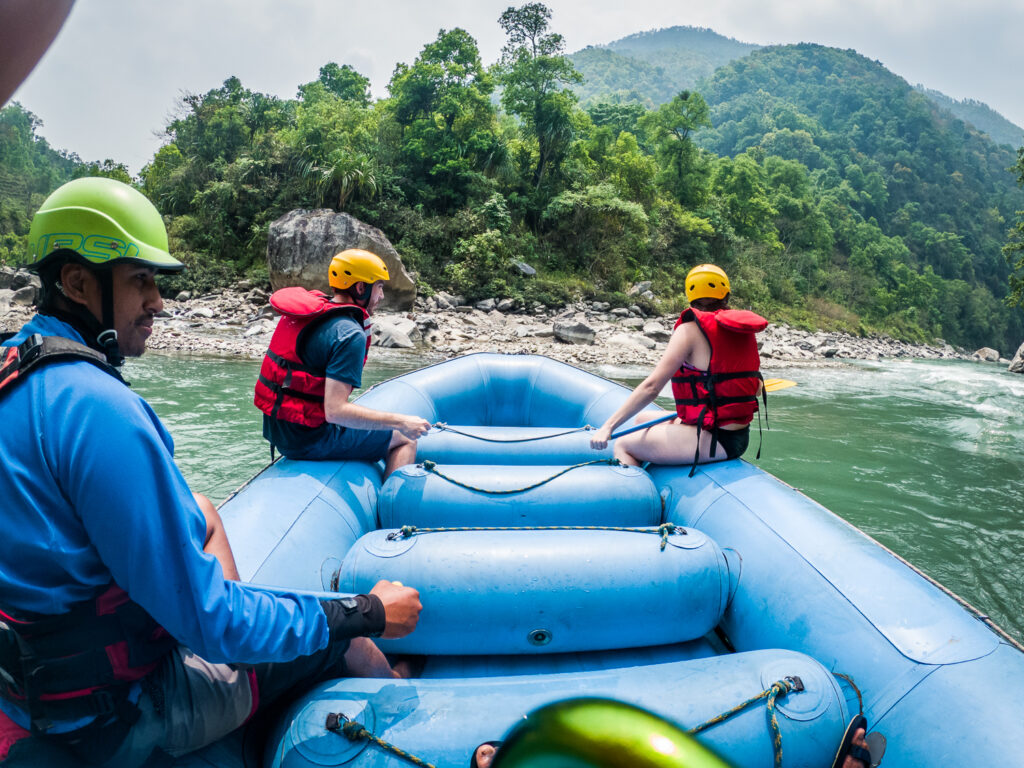
Paragliding
Why not observe the Himalayas from the sky? It's possible with a paragliding trip! Whether you're a keen paraglider pilot or a first-timer, you can discover Nepal from the air.
Paragliding is very well developed in Pokhara, although I don't know if it's found anywhere else in Nepal. We did a tandem flight with Sunrise Paragliding. It was an unforgettable experience, even if we did get motion sickness, which led to a little in-flight vomiting. But that didn't stop us enjoying the activity. The view of the Annapurna range from the air remains a wonderful memory for me.
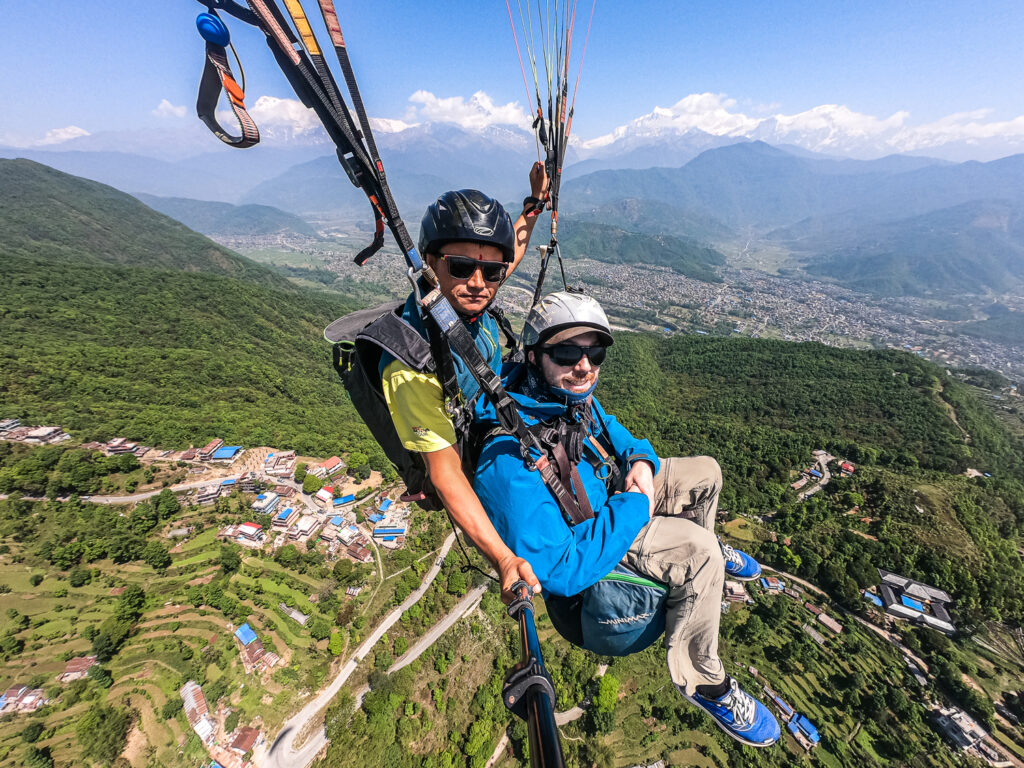
Trek
Nepal is probably one of the most beautiful destinations for trekking. There is a huge choice of itineraries. Some are more or less popular and therefore busy. Some are longer or shorter, more or less technical. The trekking industry there is so well developed that you can tailor-make your trek. Your choice of trek will therefore depend on what you want to do and see, as well as your physical condition.
A full article on trekking in Nepal will follow shortly.
We have of our ce booked our trek with the French-speaking agency Sunshine Trekking. We have chosen to do the Annapurna tour in 13 days, about 160 km.
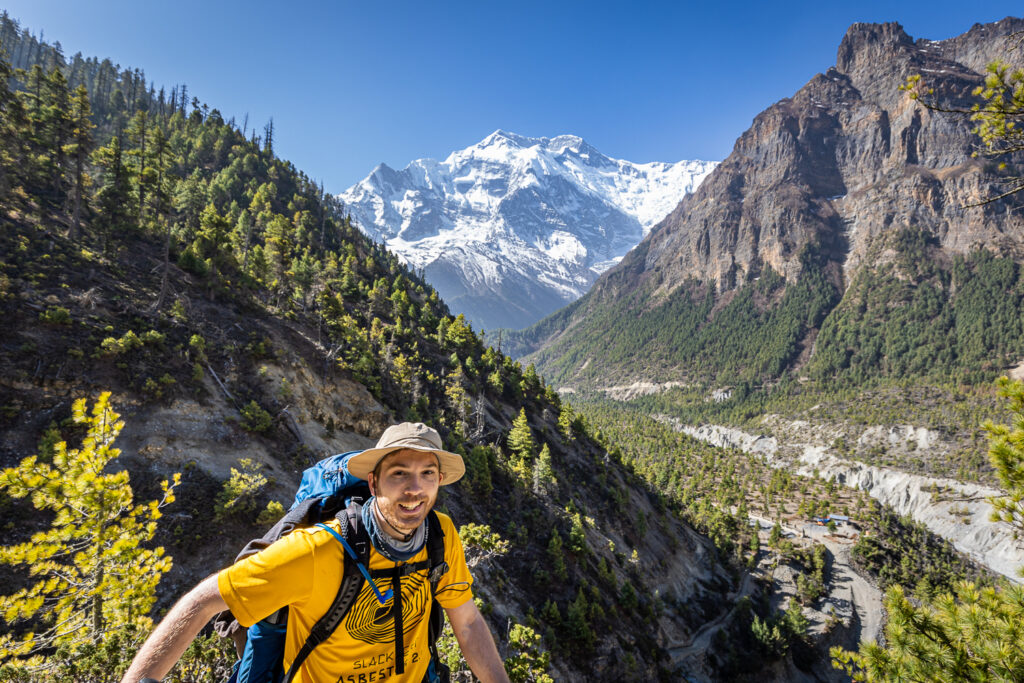
Among all the treks out there, here's a small selection of those I can recommend, based on my research and feedback from friends and other travelers we've met.
Anapurna Tower
The Annapurna tour circles the Annapurna massif. It covers between 160 and 230km. Some less interesting parts can be done by car. It's a fairly accessible trek, with all nights spent in more or less comfortable lodges, and no nights in tents. It's a very popular trek, and it's not unusual to come across a lot of people.
The start of the trek can be reached from Kathmandu or Pokhara by bus or cab. The high point of the trek, and one of the most difficult days, is the crossing of the Thorong La pass at 5400 m altitude. One of the advantages of this trek is that it is a loop rather than a round trip. Allow between 10 and 20 days for the trek.
We thoroughly enjoyed our experience on this trek. For more information, a detailed article will be coming soon.

Everest Base Camp
The Everest Base Camp trek is probably the most popular. It's a 130 km round trip, taking around 20 days, which takes you to the foot of the world's highest mountain.
The start of the trek can only be reached by plane, and it's a small plane that has to land at an airport considered to be one of the scariest in the world. This flight is highly dependent on weather conditions, and it's not uncommon to have to wait an extra day or two before having sufficient conditions to fly (think about this in your planning).
The trek passes through many small villages and is fairly comfortable, with lodge accommodation at each stage. It does, however, require you to be in good physical condition, as the last few days are intense with the altitude difference and the cold.
I personally haven't done this trek, but my little brother did several years ago and loved his experience.
Langtang Valley
The Langtang Valley lies to the north of Kathmandu. It is accessible by bus. The trek is an 11-day round trip. It is ideal for immersing yourself in the Tamang culture, one of Nepal's ethnic groups.
This trek is a little less well known and often less busy.
Mustang region
Mustang is a more desert-like region of Nepal. It's possible to do different treks, ranging from 11 to 30 days depending on your itinerary. These treks are less popular and are probably best suited if you want to feel a bit alone.
The scenery is always magnificent, but quite different from other treks in Nepal.
Alpinisme
Mountaineering is one of the country's economic engines. With 8 of Nepal's 14 8000m peaks, as well as a large number of 7000m and 6000m peaks, there are plenty of peaks to climb.
Climbing a mountain is a unique experience that will definitely take you out of your comfort zone. I haven't had the opportunity to climb in Nepal yet, but I have been lucky enough to climb in Mexico and Peru. They were unique experiences.
I won't go into all the possibilities, a more detailed article will come. I also feel that if you have the experience to do Everest or another 8000m, you probably already have all the information you need. So I'm going to concentrate here on a few ideas for summits you could do if you want to take your first steps into the world of mountaineering in Nepal.
Island Peak
Island Peak is a great first summit. It has no technical difficulties, and is almost entirely glacier hiking. It does, however, require excellent physical condition, as efforts at this altitude are far from easy. The summit is 6189m above sea level.
Island Peak is located in the same region as Everest, and is often combined with a trek to Everest Base Camp.
Mera Peak
Mera Peak is quite similar to Isalnd Peak. It's perfect if you're looking for a bit more of a challenge. The peak culminates at 6476m. It's a little more difficult, but remains an accessible, non-technical summit.
It's in a different valley from Everest, so it's less obvious to pair it with a trek to base camp. But this also makes it less popular and less crowded.
Don't forget that mountaineering remains a dangerous sport, there are deaths every year, so don't take things lightly, whether in choosing your agency or your equipment.. It's also a good idea to gain experience on smaller peaks before aiming for higher ones.
Did you know?
Finally, some information to help you shine in society.
The highest mountains are in Nepal
Nepal is home to some of the highest mountains on the planet. There's Everest, of course, the highest of them all. But the country is also home to 8 of the world's 14 peaks over 8,000 metres. Nepal also boasts some 30 mountains over 7,000m, and many over 6,000.
Nepal has its own calendar
The New Year is celebrated in mid-April, and we were lucky enough to celebrate the arrival of the year 2079 (in 2022). The Nepalese calendar is approximately 57 years behind the Gregorian calendar. It's a Hindu calendar, historically used throughout the Indian subcontinent.
The Nepalese flag is unique in the world
The Nepalese flag is unique in several ways. Its shape - two triangles or "pennons" - is found nowhere else. The two triangles represent the Himalayas and the country's two main religions, Hinduism and Buddhism. It is also the only flag of a country to be taller than it is wide.
I hope this guide has helped you, and if you have any questions, don't hesitate to post them in comments.


